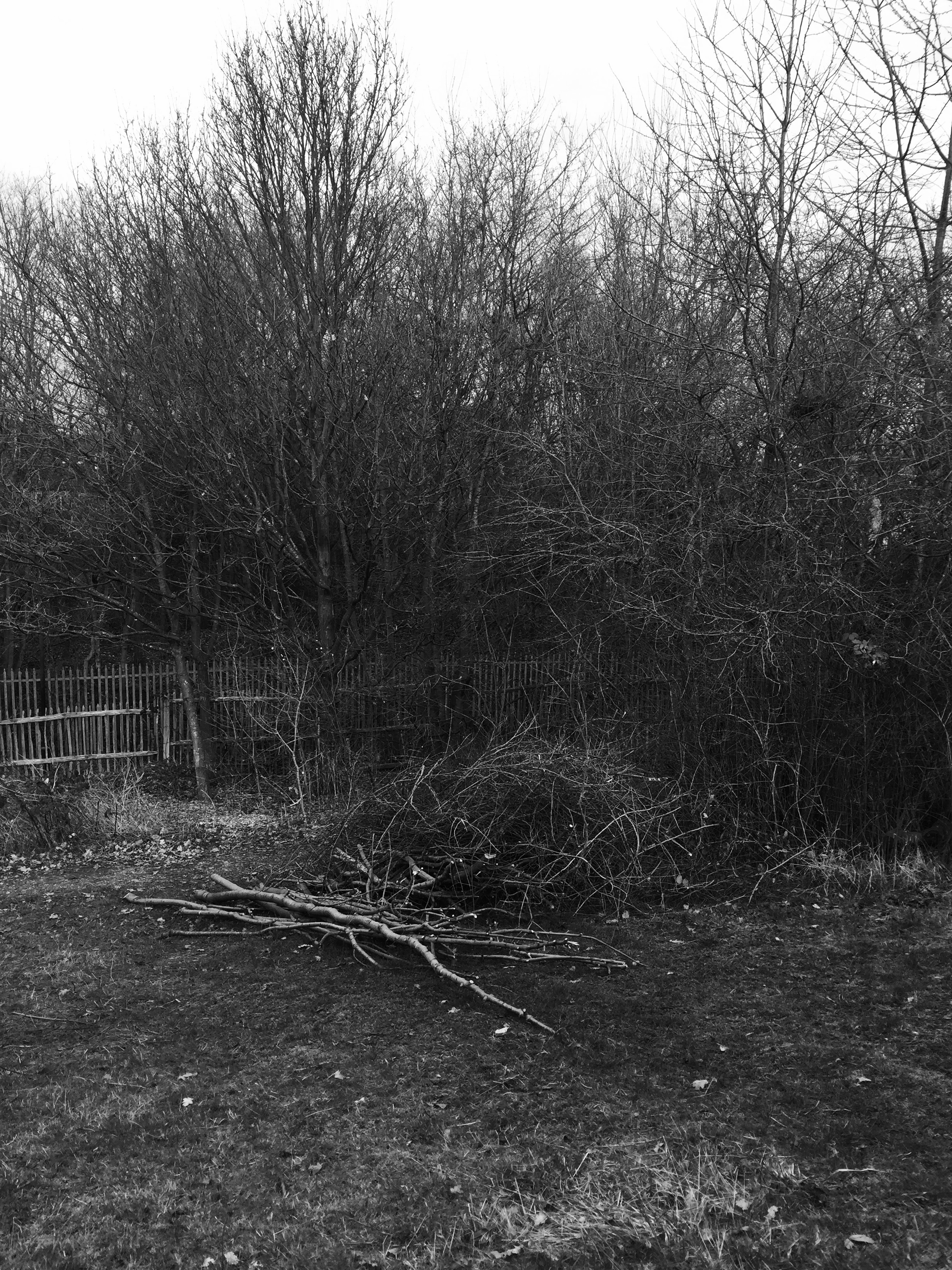<) Half way along the ridge, down the slope to your left is a group of oak trees Quercus robur, with distinctive rounded silhouettes. To the right of the oaks: an area of scrub woodland which 10 years ago was coppiced to improve nesting conditions for birds.
 Coppicing is a form of woodland management going back to Neolithic times. Periodic cutting extends the life of the trees, and creates a mosaic of habitats, supporting a wide range of animals and plants. The trees regrow from the cut stumps, called stools, with many shoots or poles rather than one main stem. Regrowth can be very fast, up to 2m per year, producing poles and carbon neutral fuelwood: the growing trees fix atmospheric carbon, which is released again by burning, in a closed loop.
Coppicing is a form of woodland management going back to Neolithic times. Periodic cutting extends the life of the trees, and creates a mosaic of habitats, supporting a wide range of animals and plants. The trees regrow from the cut stumps, called stools, with many shoots or poles rather than one main stem. Regrowth can be very fast, up to 2m per year, producing poles and carbon neutral fuelwood: the growing trees fix atmospheric carbon, which is released again by burning, in a closed loop.<) In front of the coppiced woodland, notice a small shrub with greyish brown bark and unusual bladder shaped seedpods remaining through Winter. This is Bladder Senna.
Cover: trees, February 2017.
Photograph: Ky Lewis
Brash pile, Cowslip Bank with oaks centre, February 2017.
Pinhole: Ky Lewis